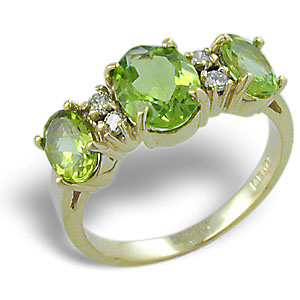If you have ever been to London and seen the British Crown Jewels, you will have noticed the giant red gemstone set in the center of the Imperial State Crown.
This stone, quite possibly the most famous gem in the entire world, is the Black Princes Ruby. As large as a hens egg, weighing approximately 170 carats, and measuring five centimeters in length, the Black Princes Ruby is a spectacular red, and it seems to glow with an internal fire of its own. It is so remarkable that it has become one of the worlds most cherished jewels. But did you know that the Black Princes Ruby really isnt a ruby at all? Its actually a spinel, and it has a long and fascinating history.
The gems first known owner was Abu Said, a Moorish prince of Granada in Spain in the mid-1300s. Abu Said lost the gem, as well as his crown and his life, to Don Pedro the Cruel of Seville. In 1366 Don Pedros own brother attacked him, but Don Pedro successfully defended himself with help from the armies of the Black Prince of Bordeaux. As payment, the Black Prince demanded Don Pedros prize jewel, and Don Pedro was in no position to argue.
How the Black Princes Ruby came to England is unknown, but it made its next historical appearance in a jeweled helmet worn by the English king, Henry V, at the Battle of Agincourt in 1415. The helmet saved Henrys life when a blow from the battle-axe of the French duke of Alencon nearly destroyed it. Both the king and the helmet miraculously survived the war, and the Black Princes Ruby remained in English hands.
Later, King James the First had the gem set into the state crown, and, despite many threats of theft, fire, and even Nazi bombs, over the centuries the Black Princes Ruby has remained the magnificent center-piece of the British royal regalia.
While the Black Princes Ruby is by far the worlds most famous red spinel, it is definitely not the only one ever possessed or coveted by kings, queens, and emperors. The Timur Ruby, also in the Crown Jewels of England, is even larger, weighing 361 carats, or more than 70 grams. It is inscribed with the names of six of its former owners. The Kremlin Museum in Moscow has another giant gem that probably belonged to the Tsar; this one weighs 414 carats.
The most dazzling collection of fine red spinels is found in the Crown Jewels of Iran. The majority were plundered from India when the Mogul Empire fell. The largest one weighs about 500 carats, and it is indeed the biggest on record. Many others weigh over 100 carats, and more than a dozen have been carved with the name of Jahangir, a Mogul emperor over 350 years ago.
Once you have seen a fine red spinel, you will easily understand why ancient royalty esteemed it as much as ruby, and sometimes even more. Top quality red spinels and rubies have superb pure red colors, and they actually fluoresce, or glow, in natural light. These similarities led to some confusion in early history when people classified gems only by their colors. They called all blue gems sapphires, all green gems emeralds, and all red gems rubies; spinels were called “Balas rubies,” after a region in northern India known as Balascia, where they were first reportedly mined.
Later, when people learned that gems of the same color are not necessarily the same kind of material, they still had difficulty separating red spinel and ruby. Not only do the two gems have the same color and fluorescence, but they are often found together in the same mines, and rubys physical properties are very similar to spinels; ruby is only slightly more dense and slightly harder. (Spinel is actually as hard or harder than emerald, topaz, quartz, and all but five other natural minerals.)
Despite its fame in the ancient world, red spinel has never been as abundant as ruby, and today it is quite difficult to find. The old mines in Afghanistan that produced so many of the giant stones in the Moguls collections seem to have been worked out, and the gem gravels of Sri Lanka and Africa, which give up many beautiful pastel colored spinels, only rarely contain gems with the pure intense red color of the Black Princes Ruby.
Now only the famous mines of Mogok, Burma, hold substantial quantities of fine red spinels. Jealously guarded by the Burmese kings until 1885, controlled by a monopoly under the British Empire, and then nationalized by a socialist government in 1962, Mogoks mines have scarcely had a chance to live up to their potential. While a few beautiful red gems have been smuggled out through the gauntlet of jungle, opium warlords, rebels, and soldiers that make up the Burmese hinterland, these exquisite gems have only been able to offer enticing hints of the sumptuous jewels that must still lie hidden in the mountains of Mogok. No one really knows how many gems remain there undiscovered, but perhaps there is still one that will rival even the Black Princes Ruby and remind us all of the days when kings and emperors held sway over vast domains and counted their wealth by the natural beauty that they owned.
{ 0 comments }
Latest posts by (see all)
- The Story of Spinel - February 29, 2012
- The Story of Peridot…. - January 19, 2012




